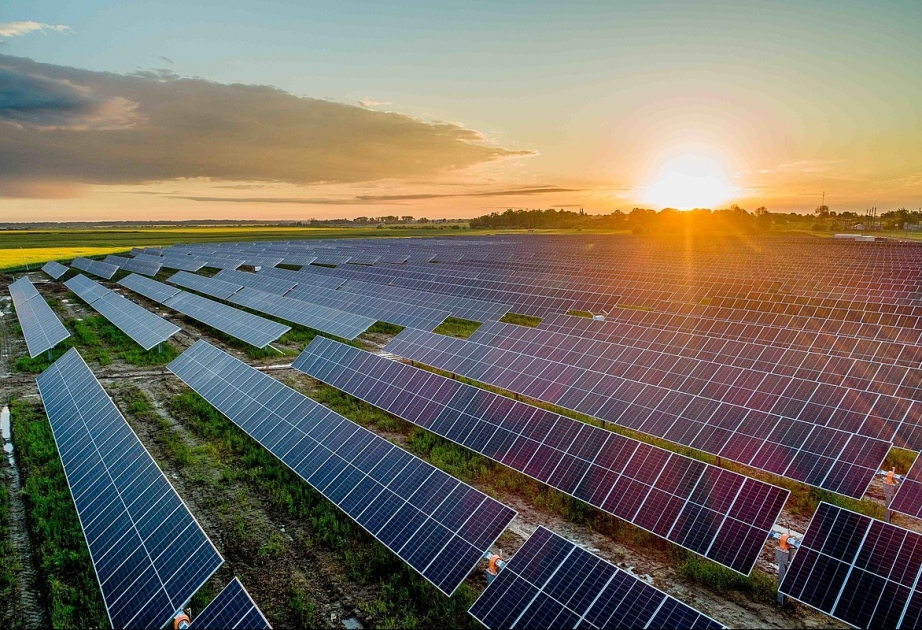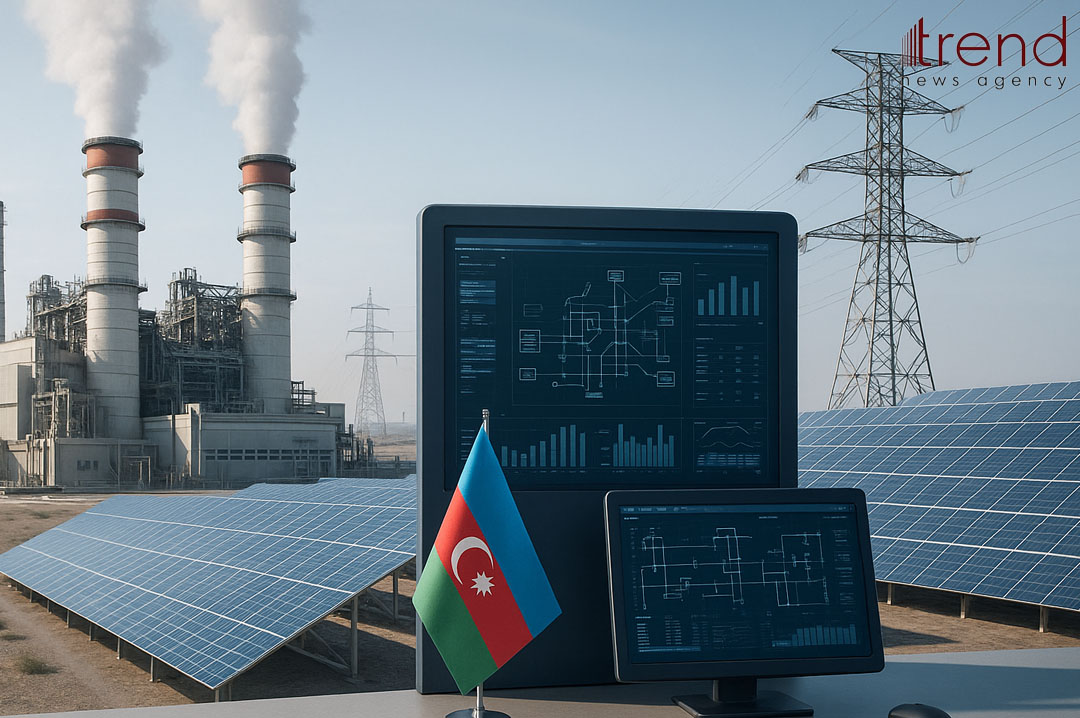BAKU, Azerbaijan, November 12. Azerbaijan has entered a new stage in its energy sector, transitioning from a traditional oil and gas exporter into a regional hub for green energy. Large-scale renewable projects now underway are strengthening the country’s economic potential and expanding its role in global energy markets.
President of the Republic of Azerbaijan, Ilham Aliyev, outlined the essence of this strategy, saying:
“Today, renewable energy is a key new area. In this field as well, Azerbaijan is among the frontrunners. Renewable energy projects implemented in Azerbaijan today are very large-scale. In Garabagh and East Zangezur alone, more than 30 hydroelectric power stations have been built over the past five years. Their combined generation capacity exceeds 300 megawatts. Construction of solar and wind power stations is underway. Recently, the foundation of two 100-megawatt stations was laid in Jabrayil district. A third solar power station with a capacity of 240 megawatts is under construction next to those stations. In total, by 2030, the combined generation capacity of solar, wind, and hydroelectric plants is expected to reach 6,000 megawatts. This represents a major industrial sector, a new stage in the development of our industry.”
According to the Ministry of Energy, Azerbaijan’s total electricity generation capacity stands at 9,732 megawatts, with renewable sources contributing 1,830 megawatts, roughly 19 percent of the total.
Last year, the country generated 28.4 billion kilowatt-hours of electricity, of which 24.1 billion were consumed domestically, 1.4 billion were exported, and only about 71 million were imported. In the first nine months of 2025, generation reached 21.8 billion kilowatt-hours, while exports totaled nearly 990 million and imports about 145 million.
 New
generation of green energy projects - Bilasuvar, Neftchala, Shafag,
and Jabrayil
New
generation of green energy projects - Bilasuvar, Neftchala, Shafag,
and Jabrayil
Construction has begun on the Bilasuvar Solar Power Plant, which will feature more than 943,000 panels and a capacity of 445 megawatts, one of the largest solar projects in the region. Simultaneous work continues on the 315-megawatt Neftchala Solar Power Plant, the 240-megawatt Absheron-Garadagh Wind Power Plant, and the 240-megawatt Shafag Solar Power Plant.
President Ilham Aliyev also recently laid the foundations for the Shams and Ufug Solar Power Plants in the Jabrayil district, each with a capacity of 50 megawatts, on October 28. These facilities represent a key step in the country’s green energy strategy, marking a new chapter in the region’s energy development.
Additionally, intensive work is underway on the country’s first renewable energy auction project, the construction of the 100-megawatt Gobustan Solar Power Plant, and an additional 100-megawatt solar facility. Once completed, these projects are expected to boost the share of renewables in Azerbaijan’s installed capacity to 33.7 percent by 2027. The new plants will generate about 5 billion kilowatt-hours of electricity, saving more than 1 billion cubic meters of natural gas and cutting emissions by up to 2.3 million tons.
Global Context and Azerbaijan’s Adaptable Approach
According to the International Renewable Energy Agency (IRENA), the world added 582 gigawatts of renewable capacity in 2024, a pace still short of the target needed for a full green transition by 2030. Many countries continue to struggle with storage limitations and grid reliability.
Azerbaijan, however, is coupling renewable growth with improvements to grid and storage systems. To manage an additional 2 gigawatts of capacity, the country is constructing battery systems with 250 megawatts of power and 500 megawatt-hours of storage. Supported by the World Bank, the 500/300 kilovolt Navahi substation and new transmission lines are also being built under the AZURE project to integrate 1 gigawatt of new solar and wind power into the national grid.
“Our goal is to raise the share of renewables in installed capacity to 38 percent by 2030. Together with our partners, we are integrating an additional 700 megawatts of new capacity onshore and offshore while ensuring system stability and resilience,” Energy Minister Parviz Shahbazov stated.
 Nakhchivan
Becomes a Green Energy Zone
Nakhchivan
Becomes a Green Energy Zone
Nakhchivan is emerging as a major contributor to Azerbaijan’s renewable transition. Under the Green Energy Zone Concept for 2026-2030, 12 priority areas have been identified. Currently, renewable energy accounts for 44 percent of installed capacity and 48 percent of electricity production in Nakhchivan. These shares are expected to rise further in the coming years with the commissioning of a 50 MW solar power plant, alongside the Tivi and Ordubad hydroelectric power plants.
Plans call for the construction of the "Jabrayil–Nakhchivan" (330 kV) and "Nakhchivan–Türkiye" (400 kV) power lines, along with a converter substation. Experts say this infrastructure could mark a new chapter in the regional transmission of green energy through the Zangezur corridor.
Harnessing the Caspian Wind and Expanding International Corridors
Azerbaijan is advancing several cross-border renewable projects. Through the Caspian Breeze Consortium, comprising ACWA Power, Masdar, and SOCAR Green, offshore wind potential in the Caspian Sea is being developed. A 6-gigawatt project is planned, with 4 gigawatts to be exported to Europe via the Caspian–Black Sea–Europe Green Energy Corridor. The initiative has already been proposed for inclusion in the European Network of Transmission System Operators for Electricity’s (ENTSO-E) ten-year development plan.
In addition, the Trans-Caspian Energy Corridor agreement among Azerbaijan, Kazakhstan, and Uzbekistan will link their power systems for the first time. The project is managed by the Baku-based Green Corridor Alliance and supported by the Asian Development Bank and the Asian Infrastructure Investment Bank.

Hydrogen, Geothermal Energy, and Efficiency
Azerbaijan is also drafting a national strategic vision for hydrogen energy, a blueprint that will address the production, consumption, and export of "green hydrogen" while accelerating the country’s integration into global energy trends. Meanwhile, the nation’s geothermal energy potential is estimated at 571.2 MW, with an additional electricity potential of 57.1 MW, prompting plans for pilot geothermal projects in Bibiheybat, Kurdamir, and Masalli.
Another critical focus is energy efficiency. The Energy Efficiency Information System (EEIS) and the Energy Efficiency Fund have been launched to support concessional loans, grants, and subsidies for efficiency measures in the coming years.
In sum, Azerbaijan’s green energy strategy extends beyond national needs; it aims to build an integrated energy corridor stretching from Central Asia to Europe. This vision not only strengthens the country’s position as a regional energy leader but also contributes meaningfully to the global green transition.
Stay up-to-date with more news on Trend News Agency's WhatsApp channel







